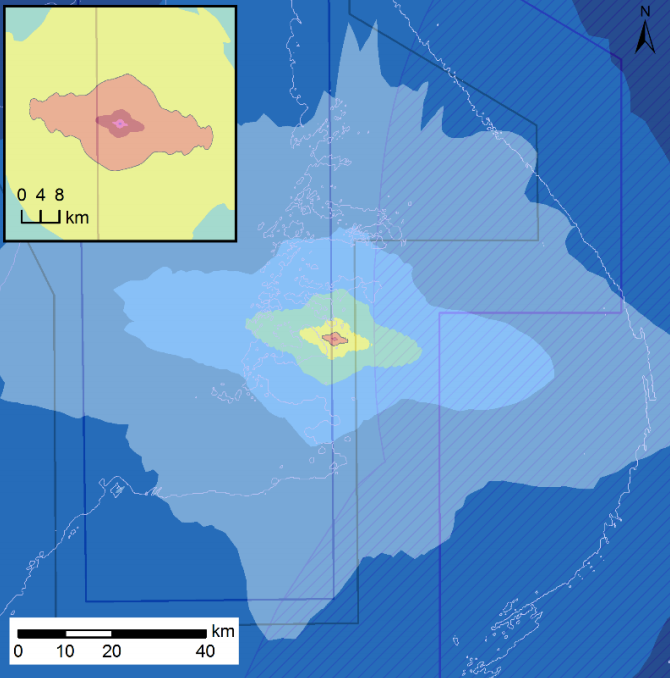Services / Acoustic Modelling
Predicting acoustic footprints of industrial operations
Numerical modelling reliably predicts long-range underwater sound propagation from industrial operations. Regulatory bodies are increasingly recognizing the power of these predictive tools and mandating their use in operational planning of operations. JASCO’s benchmarked algorithms and proprietary software solutions enable us to numerically model sound from:
Seismic survey sources such as airgun arrays, water guns, boomers, and vibroseis
Active sonar and transducers such as sub-bottom profilers, multibeam sonar, and side-scan sonar
Vessels such as survey vessels, icebreakers, tankers, tugs, and dynamic positioning thrusters
Construction activities such as pile driving, drilling, blasting, dredging, rock dumping, and pipe laying
We understand the complex theory, underlying assumptions, and limitations of each method; by applying consistently the most suitable estimation approaches to each project, we avoid pitfalls that could invalidate the conclusions of a study.
“I enjoy working with the modelling team. They are professional and provide a high-level product.”
Actionable, understandable results
We explain our results in practical terms that relate directly to the operational scenarios and recommend the most effective mitigation methods. Where applicable, the modelled sound levels are interpreted considering the acoustic sensitivity specific to the biological receptors in the area including marine mammals, reptiles, and fish.
Our model results can be readily translated into exclusion zones/safety radii for use by marine mammal observers during ongoing operations. We provide sound level maps of affected areas that are easily interpreted by all project stakeholders.
Advanced acoustic modelling algorithms
Our in-house numerical models have been applied to acoustic impact assessment and mitigation contexts worldwide. Our modelling algorithms have been benchmarked against test datasets. We continually develop and refine our acoustic models so they uphold all recognized standards in underwater and in-air acoustic modelling. Our models include:
Marine Operations Noise Model (MONM) for sound propagation at low and high frequencies
Airgun Array Source Model (AASM) for acoustic signatures of seismic airgun arrays
Full Waveform Range-dependent Acoustic Model (FWRAM)
VSTACK for precise close-range sound propagation
JASCO Animal Simulation Model Including Noise Exposure (JASMINE)
Acoustic Real-time Exposure Model Incorporating Ambient (ARTEMIA)
Impulse Noise Propagation Model (INPM) for impulsive sounds in air
Our models draw from our extensive database of industrial noise measurements stemming from over 30 years of underwater acoustic data collection and analysis.
“Always reliable and robust modelling results to underpin our assessments. JASCO is regarded by our clients as having a good reputation.”
Animal movement modelling for impact assessment
To predict acoustic impacts, we use a specialized software package (JASMINE), which incorporates the most current science on modelling aquatic species’ movement and behaviour, to expose simulated marine animals (called animats) to 3-D modelled sound fields. We determine the movement and behaviour parameters uniquely for each species from published studies on animal behaviour:
Direction of movement
Rates of lateral and vertical movement
Time spent at the surface between dives
Time spent at depth
Time spent in and between behavioural states (foraging, rest, play, and travel)
We model the acoustic exposure for each animat and compare it to exposure criteria to determine the probability of animals encountering various levels of acoustic exposure. These exposure probabilities provide a measure of the potential environmental impact of an acoustic source.
“The information is highly technical, and the team conveyed the results of their studies in very effective and well-written reports. Thank you!”
Recent reports
Contact us to learn more about JASCO’s services and products.












